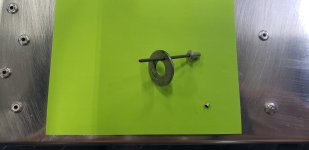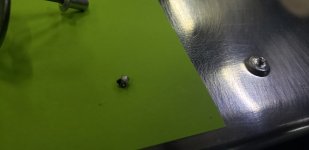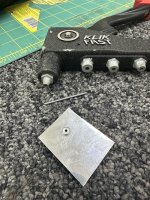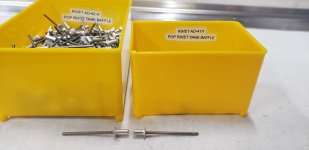Is there a best method to use when pulling this type rivet that will produce a respectable outcome? I have about 1 out of 5 that resemble a decent finished rivet. The rest end up looking bad and they also plug up the rivetgun nosepiece to where you have to unscrew it and pound out the rivet slag.
I’m using the smallest nose piece of 3/32”. The mandrel of the rivet is .063”.
I drilled a .068” hole in the side of a washer and slid over the mandrel and then pulled the rivet with similar results. It did make it easier to punch out the metal slag from the rivet instead of removing the nosepiece.
What am I doing wrong?
Thanks, Dave
I’m using the smallest nose piece of 3/32”. The mandrel of the rivet is .063”.
I drilled a .068” hole in the side of a washer and slid over the mandrel and then pulled the rivet with similar results. It did make it easier to punch out the metal slag from the rivet instead of removing the nosepiece.
What am I doing wrong?
Thanks, Dave










